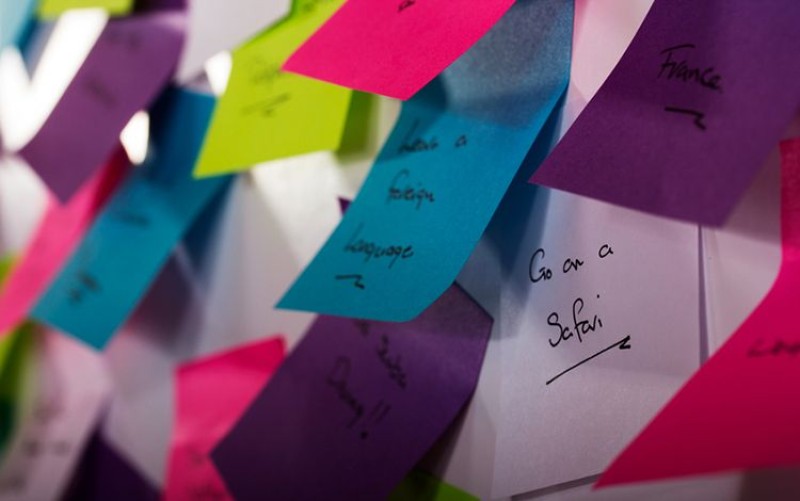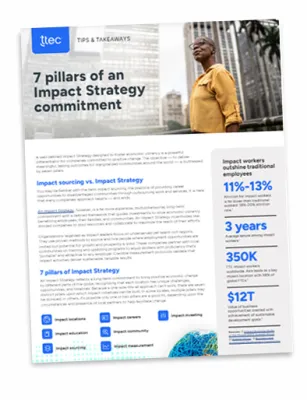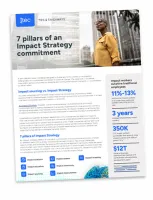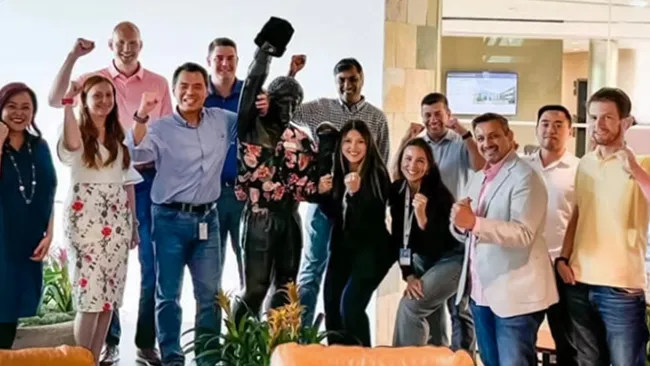Healthcare payers face a dynamic industry: Surging consumerism, technological innovation, and evolving regulations are reshaping the healthcare value chain.
This push for value has driven organizations to compete for members and patients, as well as redesign their business models, leading to greater focus on quality, customer service, and transparency.
Humana is a health insurer on a mission to buck the system and challenge the status quo when it comes to the delivery of customer experience. The need to establish a customer-centric culture at Humana became the motive for organizational change in 2015, and that mission started with transforming employees’ mindsets and behaviors.
Geeta Wilson, director of consumer experience at Humana, explains how it became critical for employees to gain deep empathy for customers, and to “maximize” the customer experience by quickly resolving customer issues, making issue resolution effortless, actively listening to customers, and treating them with compassion.
The need for change sprang from key customer pain points that Wilson and her team took note of in 2014. Some of those included customer frustration with understanding their claims and coverage, friction getting prescriptions filled, confusing communications, a need for cost transparency, difficulty finding answers online, and a desire to get their issues resolved upon first contact. The discovery of those pain points then led to key priorities, including improving self-service, reducing transfers, and improving call resolution, according to Wilson.
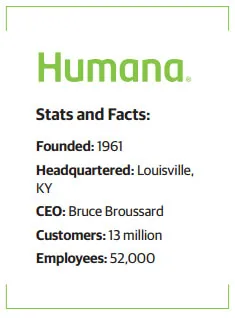
Humana as a whole began a shift toward thinking “consumer first” with the arrival of CEO Bruce Broussard in 2013. For Wilson’s team, that meant delivering consistent messaging, better self-service opportunities, and empathetic resolutions. “There was an opportunity to not only improve the experience that members have when they talk to a customer service rep, but also an opportunity to change the experience,” Wilson says.
In October 2014, Wilson and her team asked for, and were granted, $4.4 million to fund new customer-centric efforts. “We drove a compelling rationale to executives in the middle of a budget year to ask for more resources to create a group,” she says. “Asking for money in October is ridiculous, but we did it and we got it. There was a confidence because we have to do things differently in our corporate world.”
Now known as the Customer Experience FastStart team, the group focuses on eliminating friction from consumer touchpoints by creating customer-centered processes to accelerate new ideas, products, and process development. It is a lab environment designed to listen, learn, and act to improve the Humana consumer experience.
Innovating the process of listening
Wilson lovingly refers to FastStart’s cross-functional strategy as the “service experience of the future.” In early 2015, the team invited 200 top-performing individuals from a cross-section of the organization, ranging from legal to HR, to the lab to conduct immersion exercises to help the team see behaviors that customers may be experiencing.
Next, the team recruited a cross-section of Humana’s pharmacy customers—100 people—representing a variety of professions from lawyers to nurses. They all shared common behavioral traits, which included the ability to embrace ambiguity, the aptitude to problem-solve, a willingness to learn, the ability to forgive, and remain cool under pressure.
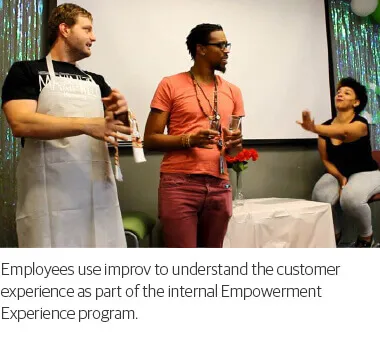
Every week, ambassadors assigned by the FastStart team lead calls with these groups to foster ideas and exchanges between the participants. For example, a lengthy phone call a participant had with an associate might trigger a discussion during a call. The ambassadors then identify any opportunities that might require employee coaching. “We had people thinking about how they come to our organization and what they experience,” Wilson says.
Out of those exercises grew a deep customer empathy and a willingness to experiment with different engagement options. One of the first tangible changes that developed from these meetings was a directive to simplify the IVR menu and add a new touchscreen menu, soon to be deployed.
Wilson’s team didn’t stop there. They also invited senior leaders into the lab. Initially 200 executives visited to witness firsthand what frontline employees experience and to share ideas. In 90 days that number increased to 2,000.
Recognizing the value in receiving and sharing this first-hand feedback, Wilson’s team started weekly Idea Jams and Drop-In Thursdays to continue building the momentum around becoming customer-centric and energizing the organization to work toward that goal.
The Idea Jams occur in the lab with a cross-organizational team. Wilson says some people who have never spoken in front of a group of people before are tasked with kicking off the meetings with a jam session. Some people play music on their devices; others bring in bands to play. After the jams, people in attendance share personal pieces that reflect Humana’s cultural values and they also celebrate wins. “We are on a customer movement. We’re challenging our corporate routine,” Wilson says. “[Idea Jams] are meant to stimulate cross-departmental conversation. If one team shared this, we imagined departments coming together regularly every day. It was my way of breaking down silos.”
While the weekly Idea Jams were intended to spur collaboration, break down silos, and energize groups of employees, Drop-In Thursdays were intended to help answer questions face to face. Anyone in the organization is invited to “drop-in” to ask questions about how the team works in the lab. By July 2016, nearly 4,000 employees had dropped in since the start of the program.
A maximizer mindset leads to big results
Behind every customer experience strategy is the need to demonstrate ROI. It’s vital to understanding the effectiveness of the strategy or initiative. Wilson says that Humana successfully reduced transfers by 21 percent, improved its self-service capability, decreased repeat calls, and improved its Net Promoter Score.
Wilson’s team also started an initiative called the Empowerment Experience where frontline associates are empowered to act in the best interest of members. The vision was to build an army of Humana “maximizers.” That means taking ownership of issues, giving a call back, or sending a personal note.
“In the past, call center associates might have felt that giving information and instructions helps the customer when it actually makes the customer take more steps to resolve a claim or a problem with a prescription,” Wilson says. “Associates are now encouraged to take the time needed to resolve the customer’s issue on their first call.”
Humana achieves this new level of ownership through immersions where associates take time to explore customer issues, empathize with them on their pain points, make personal connections, and own the issue through to resolution. The exercises include some unconventional methods to illustrate key points about the customer experience, such as improvised skits. In one setup, two volunteers are seated on stage and are pretending to eat at a high-end bistro. When they order a bottle of wine, the waiter gives them detailed instructions on how to get the wine themselves. What happens next gives real insight into how a member feels when the customer experience goes awry.
As of July 2016, all 2,100 Humana Pharmacy customer care specialists completed the Empowerment Experience. That initiative alone drove transfers down and improved NPS. “We had a maximizer mindset to empower individuals to provide innovative customer experience.”
Outside Humana, the customer experience industry is taking notice of the changes. Humana earned a Temkin Experience rating of 63 percent in 2015, a jump of 12 percentage points. And the CXPA awarded Humana its 2016 CX Innovation Award in May.
